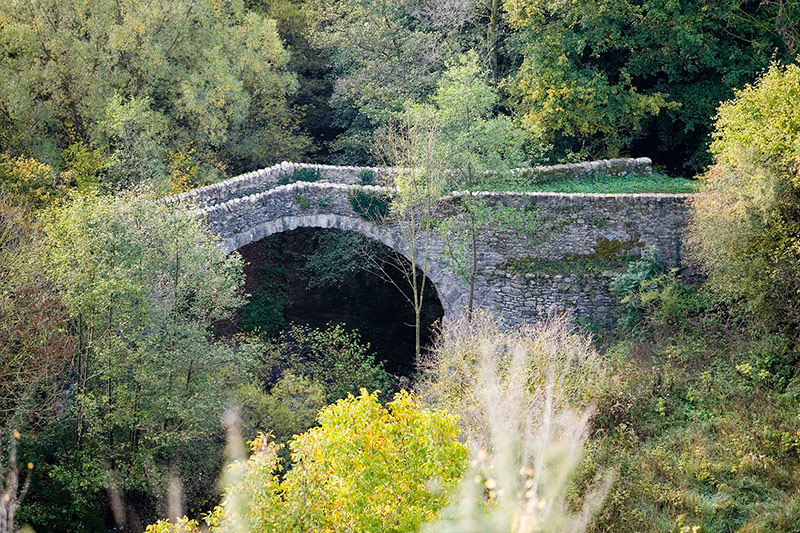MENUMENU

Món Sant Benet
Món St Benet
Camí de Sant Benet, s/n 08272 Sant Fruitós de Bages
Phone number +34 93 872 94 01 info@monstbenet.com
We are a monumental site with medieval roots. We are an old Catalan art nouveau house where you can still breathe the artistic atmosphere. We are a space for families and groups to enjoy leisure and fun. We are a setting for innovative, select cultural projects. We are a natural area seeking the balance between the environment and the products we grow.
Món Sant Benet (MSB) is a cultural heritage centre established in 2007 bringing together different areas and cultural, tourism, leisure and scientific services. The MSB site includes the medieval monastery of Sant Benet del Bages, entirely recovered and refurbished, open for visitors and playing host to a busy cultural programme; the headquarters of the Alícia Foundation, which works on food research, and the Món Hotel, ideal for your holidays and business meetings.
We are at Sant Fruitós de Bages, 10 minutes from Manresa, 40 from Barcelona, just over an hour from Girona and less than an hour and a half from Tarragona.
Tot això, acompanyat d’una oferta gastronòmica de referència amb 3 restaurants i el meravellós hotel Món 4****s, tot en un entorn natural incomparable al costat del riu Llobregat.

Church of Sant Miquel de Cavallera
Town Hall of Camprodon | Tel. 972 740 005 | www.camprodon.cat
The building is composed by an only nave with a rectangular abside. Close to it, we can find the Tower of Cavallera, a 11 metres high defensive tower.

Parish church of Sant Cecília de Molló
Town hall of Molló | Phone +34 972 740 387 | www.mollo.cat
Consecrated to this Roman martyr and virgin, the church is an important monument within the Pyrenean Romanesque route. Built towards the end of the 12th century, it consists of a single nave and an elaborate semicircular apse.
Dedicated to this Roman martyr and virgin, the church constitutes an important monument on the Pyrenean Romanesque route. Built towards the end of the 12th century, it has a a single nave and a very evolved semicircular apse. Buttresses reinforce the transverse arches of the barrel vault over the nave.
The interior of the presbytery has an ornamental frieze with corbels, and there are two not very deep chapels. The slender, Lombard influenced bell tower or four storeys (restored in 1952) is an outstanding feature that is attached to the building, with arches marking the different floors, and with two twin round windows beneath the roof.
Other highlights are the entrance door and the doorway, without sculpting and with diminishing arches, showing the influence of the Roussillon school. The doorway has eight corbels, seven of which represent the deadly sins.
The church was rebuilt in 1428 after an earthquake and at one point had seven altars. Smashed up during the Spanish Civil War, it was later restored. In 1979 it was declared a Monument of Historical artistic Interest.

The Old Bridge of Sant Joan de les Abadesses
Tourist office of Sant Joan de les Abadesses
Phone number +34 972 72 05 99 | turisme@santjoandelesabadesses.cat
The foundations of this bridge go back to 1138 when the construction of the Roman bridge leading into the town was finished. Damaged by an earthquake in 1428 it was rebuilt in the gothic style with a very fine arch. At the end of the civil war it was blown up and in 1976 it was faithfully reconstructed with its gothic arch and the small arches of the Romanesque bridge.

The residence of the Abbey of Sant Joan de les Abadesses
The residence of the abbots; it dates back to the twelfth and fifteenth centuries. The coat of arms that is still preserved on the majority of the internal columns is of Arnau de Villalba, the abbot who had the residence extended. The sala tosca (tosca room) is another highlight. In a poetic anachronism the poet Joan Maragall made the building the scenario for the legend of the count Arnau. There is a permanent exposition “Romanesque art: a tour round Ripollès county”.

The Medieval Bridge of Vallfogona
It seems that the bridge was constructed in the fourteenth century by the nobles of Milany, who precisely in the epoch when the bridge was built transferred their residence to Milany castle in Vallfogona.
The bridge’s purpose was to cross the torrent of Vallfogona as this was the path that joined the village to the castle of Milany and Vidrà.

Romanesque ermitage of Sant Bartomeu de Covidalses
This beautiful ermitage is located in the middle of fields. It was built in the 12th Century. It has got a unique nave with a semicircular abse with archeries from Lorbard. The present building has been restored, mainly due to the earthquake happened in 1425.

Sant Joan de Fàbregues
Visits: it is organised a mass on 24th June at midday. For other visits contact with the company Anigami (they also run the accommodation close to the church) on the phone +34 937 447 295.
Romanesque building which has a nave, an apse and a lantern tower. It was rebuilt in the 11th Century and modified after the earthquake in 1427.

Hermitage of Sant Llorenç del Munt
Visit times: to arrange visits please contact M. Dolors Farrés on 649 131 172 or on 938 852 510.
Although it gave its name to a castle estate in the year 886, the existence of this church was not recorded until 1012. The building consists of a nave covered by a vaulted archway with a semicircular apse to the east.

Sant Julià de Cabrera
Visits: a mass is organised the Palm Sunday at 1pm. For other visits do contact with the priest of Rupit al 630 116 954.
The romanesques building was seriously damaged due the the earthquakes that took place between 1425 and 1427. Although it had different changes, it preserves part of its original structure.
